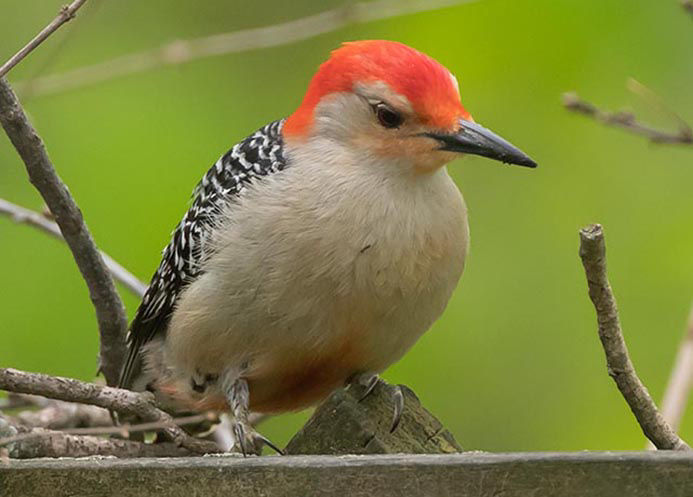Checking Out Woodpeckers in Florida Habitats: Where to Spot These Birds
Checking Out Woodpeckers in Florida Habitats: Where to Spot These Birds
Blog Article
Revealing the Secrets of Woodpeckers: Behavior, Environment, and More
Woodpeckers, with their one-of-a-kind behaviors and specialized adaptations, have actually lengthy attracted researchers and nature enthusiasts alike. By uncovering the mysteries bordering woodpeckers' behavior and environment options, a deeper understanding of these bird wonders emerges, using a glimpse into their interesting world.
Woodpecker Actions Insights
In examining woodpecker actions, a remarkable screen of specialized abilities and adaptations arises, clarifying their impressive environmental particular niche - Woodpeckers in Florida. Woodpeckers, known for their unique drumming on trees, have a variety of behavior characteristics that add to their survival and success in their environment. One essential actions is their drumming, which serves several functions such as interaction, establishing area, drawing in friends, and situating food sources. This balanced pecking likewise showcases their impressive strength and endurance, as they can hammer away continually at high speeds without causing harm to themselves.
Moreover, woodpeckers show an unique feeding behavior identified by their capacity to essence insects from tree bark using their specialized beaks. Their long, barbed tongues help in catching victim, while their strong neck muscular tissues offer security and precision throughout pecking activities. This feeding method allows woodpeckers to accessibility concealed insect larvae and extract them with amazing performance.
Environment Preferences and Option
What aspects influence the environment choices and option of woodpeckers? One essential aspect affecting woodpecker habitat choice is the availability of appropriate nesting sites. Woodpeckers usually favor woodlands with a mix of mature trees that offer sufficient opportunities for tooth cavity excavation.
Additionally, woodpeckers reveal a preference for habitats with a plentiful supply of food sources. They are primarily insectivorous, feeding upon beetles, ants, larvae, and other bugs discovered in decaying timber or tree bark. For that reason, woodpeckers have a tendency to prefer woody locations with a varied insect population to meet their nutritional needs.
Additionally, the visibility of dead or rotting trees is another crucial consider woodpecker habitat option. These trees not only give food sources but additionally use suitable substratum for tooth cavity excavation. Dead trees are essential for the maintenance of healthy woodpecker populations, as they play a crucial duty in the woodpeckers' life process and community dynamics.
Feeding Practices and Diet Regimen Structure
Woodpeckers demonstrate a specialized feeding behavior concentrated on foraging for bugs within different habitats. In enhancement to bugs, woodpeckers also eat tree sap, fruits, nuts, and seeds, adding selection to their diet plan depending on the period and accessibility of food resources.
The foraging strategies of woodpeckers are well-adapted to their arboreal lifestyle (Woodpeckers in Florida). Their capacity to dig deep into wood not only gives them with food but likewise aids in developing nesting tooth cavities and establishing areas. Woodpeckers play a vital function in preserving the health of forests by managing insect populaces and assisting in the disintegration of timber. Comprehending their feeding routines and diet plan structure is necessary for preservation efforts aimed at preserving these distinct and important birds.
Drumming Sounds and Communication
Utilizing quick drumming noises on numerous surface areas, woodpeckers utilize a distinctive type of communication to indicate area boundaries and site here draw in mates. This drumming habits is not just a way of communication but likewise acts as a way for woodpeckers to develop their existence within a certain area. The strength, rate, and pattern of the drumming can convey crucial details to various other woodpeckers in the area.
Woodpeckers utilize drumming audios to reveal their visibility in a territory and to caution off possible burglars. The loud and recurring nature of the drumming works as a clear signal to other woodpeckers that the area is currently asserted. This aids in decreasing disputes and lessening physical battles in between people.

Survival Adaptations and Specialized Makeup

Final Thought
Finally, woodpeckers display special actions, such as drumming audios for communication, and have actually specialized anatomy for survival in their chosen environments. Their feeding practices and diet composition even more demonstrate their adaptability to various environments. By understanding these facets of woodpeckers, scientists and conservationists can much better protect and preserve these fascinating birds and their communities.
Report this page